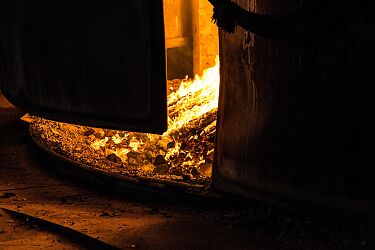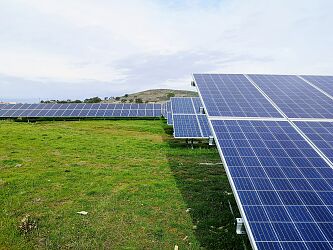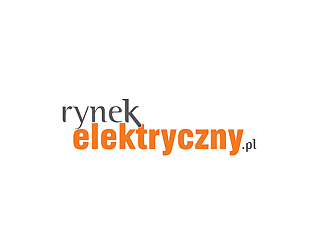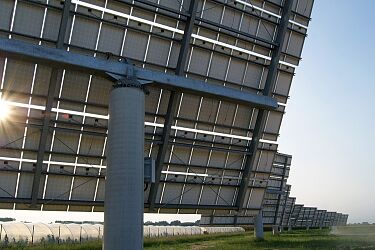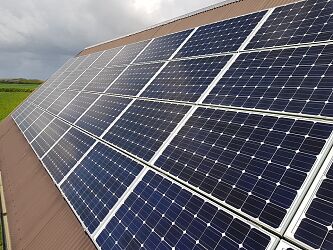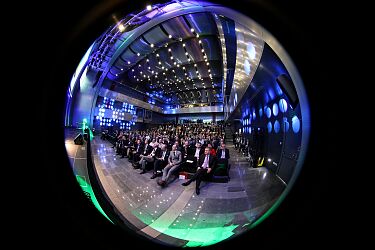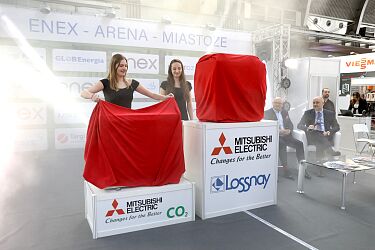News
.webp)
"Scenarios for heating systems electrification in single-family buildings in Poland until 2030"
It comes as a paradox that the time of crisis resulting from the COVID-19 pandemic has become the perfect moment to fit into the current and future anti-crisis EU policy through appropriate additional impulses to the economy. These are designed to strengthen, modernize and accelerate the domestic market again. "Scenarios for heating systems electrification in single-family buildings in Poland until 2030" is the latest PORT PC Report.
Some data from the domestic market, to start with
2019 was the next in the series (starting from 2010) when significant increases in the sale of heat pumps was recorded. This is particularly true with air-to-water heat pumps used for central heating. The sales increased by as much as 91% in 2019 compared to 2018 (approx. 20,300 units were sold in 2019). As the result, at the end of 2019, approx. 128 thousand were working in Poland - these were used for heating installations. These produced 9.92 PJ / year of renewable energy. This is close to the optimistic variant in the National Action Plan (KPD) for renewable energy.
Estimates for 2020 indicate further intensive market development - the amount of renewable energy produced by heat pumps will increase in 2020 and (the range from 10.51 PJ / year - realistic variant up to 11.52 PJ / year - optimistic variant).
The report also presents forecasts for the development of the heat pump market in single-family buildings in Poland until 2030. The two scenarios have been adopted: base and optimistic, depending on the intensity of support for this technology in various areas. The first scenario assumes that in 2030, approximately 1.09 million heat pumps will be working in Polish homes (10% - the average share in all buildings). These will generate approx. 29.81 PJ / year of renewable energy. In the optimistic scenario, the number of heat pumps could reach around 2.08 million (share: 22.8%), and the value of renewable energy these appliances generate - approx. 60.36 PJ / year. It is worth emphasizing the fact that this would significantly increase national energy security, because all energy needed to power heat pumps (non-renewable and renewable) would come from local resources then. The share of energy from renewable sources may systematically increase, e.g. home photovoltaic installations may become even more popular.
![prognoza.png [59.41 KB]](https://www.targikielce.pl/storage/image/core_files/2020/5/29/3bf09938bbd7634c55a086b196ea53d0/default/preview/prognoza.webp)
PORT PC forecasts regarding the renewable energy production generated by heat pumps installed in all single-family buildings in Poland from 2020 to 2030 - base variant A and optimistic variant B
The popularity of heat pump technology in Poland results from many factors
First of all, this popularity results from general, global trends related to the electrification of heating. This situation also stems from heating equipment market changes in Poland and appropriate financial incentives (e.g/ the "Clean Air" programme; now expanded to include additional potential in its new version). The authors of the report also present a number of other factors that significantly fuel the trend and can change the model of our heating and electricity market.
The results are already visible in many areas - Poland’s largest producers of solid fuel boilers which account for over 60% of the market switch their business profile. Tehy are preparing for the zero-emission devices production such as heat pumps. World tycoons in low-emission heating devices production are also planning new investments in Poland. The Polish heating companies transformation towards innovative, "green" technologies will undoubtedly be facilitated with systemic support. The National Centre for Research and Development (NCBiR) opened the "Fast Track" competition targeted at such entities in December last year - this is an example of this type of support.
The report also points out to high development potential of intermediary industries, i.e., e.g. Polish enterprises which produce components for heat pumps as well as of service companies. According to PORT PC and EHPA estimates, in 2030 Poland will see the projected number from 1.09 to 2.08 million of heat pumps (depending on the market development scenarios). The production, installation and service sector will employ from 11 to 20 thousand people.
Barriers identification, recommendations and system support
The optimistic scenarios, the fact strongly emphasized in the report, require various development barriers to be done away with in order not to impede the heat pump market in Poland. The authors identify the barriers in such areas as: information and education, legal and research and development environment, energy policy and practical aspects of designing and implementing heat pump installations. They also present specific recommendations for policy makers, i.e. a list of postulated actions.
In the context of overcoming restrictions (information and financial barriers), the report indicates a significant effects of the "Clean Air" programme for increasing heat pumps interest and sales. March this year data show that nearly half of the heating devices installed in new buildings are devices using renewable energy, i.e. heat pumps (32% in total - over 10,600 applications) and biomass boilers (17%) - the data relates to applications for programme subsidies filed. Interest in renewable energy technologies in existing buildings turned out to be much smaller.
Unfortunately, at present new buildings have been excluded from the "Clean Air" programme. Alass, because in January 2021 the strictly stringent requirements of the Technical Conditions (WT 2021) for newly built single-family houses come into force. The report authors point to the urgent need to close the gap in the policy of supporting zero-emission heating technologies in new housing which is the result of this exclusion. Hopes are attached with the introduction of a special tax relief, a similar scheme to the existing thermo-modernization relief.
Will the energy market in Poland meet the challenges?
Also the introduction of electric tariffs dedicated to heat pumps in Poland an important postulate - these are modelled on the G13 three-zone tariff applied by Tauron. A parallel launch of the aggregation project for the DSR service which will enable heat pumps users to benefit from reducing the power grid load at the operator's request is also required.
The widespread use of heat pump technology is very strongly linked to the domestic electricity market thus the report also includes an extensive analysis of this market. Electric tariffs currently available in Poland have been characterised in the context of heat pumps use and the energy costs optimisation. The report also includes forecasts of possible price changes on the energy market as well as a comprehensive answer to the question about the ability of the National Energy System to support additional demand for electric power generated by heat pumps in view of the expected intensive development of the market and thus the demand for these devices.
Green Deal goals and technology implementation
Further issues analysed in the report focus on the importance of heat pumps in building heating electrification and implementation of the so-called connecting sectors policies in the light of the Green Deal. The analyses show that in order to achieve the 95% decarbonisation level goals in the perspective of 2050 in the entire EU countries’ economy, it is necessary to implement electrification of construction at the level of 63% . In the case of heating, this will only be possible when heat pumps are widely used.
Heat pumps are one of the leading technologies ready for the implementation of the new energy policy strategy related to decarbonisation - this sector is a kind of pioneer between the today’s energy systems and the fully digitized energy systems of the future. Technological changes allow heat pump use in buildings in a much wider range than a decade ago. Devices may be installed during renovation. These devices can produce fully decarbonised heat for buildings heating and cooling as well as domestic hot utility water. They also also suitable for use in low-temperature industrial processes. In addition, the heat pump market gains from the rapid decline in photovoltaic system production costs. The combined use of these technologies, together with a mechanical ventilation system with recuperation makes the plus or zero energy houses construction (the idea of a "House without bills" promoted as part of a social action initiated by PORT PC).
In order to disseminate the economic aspect of the heat pump investment, the report authors presented the comparative analysis of investment outlays for various technologies in relation to operating costs. They used the example of a typical single-family building, both newly built and existing. Compared with other heating technologies, heat pumps are competitively priced in both cases.
Materials taken from: PC PORT press releases

